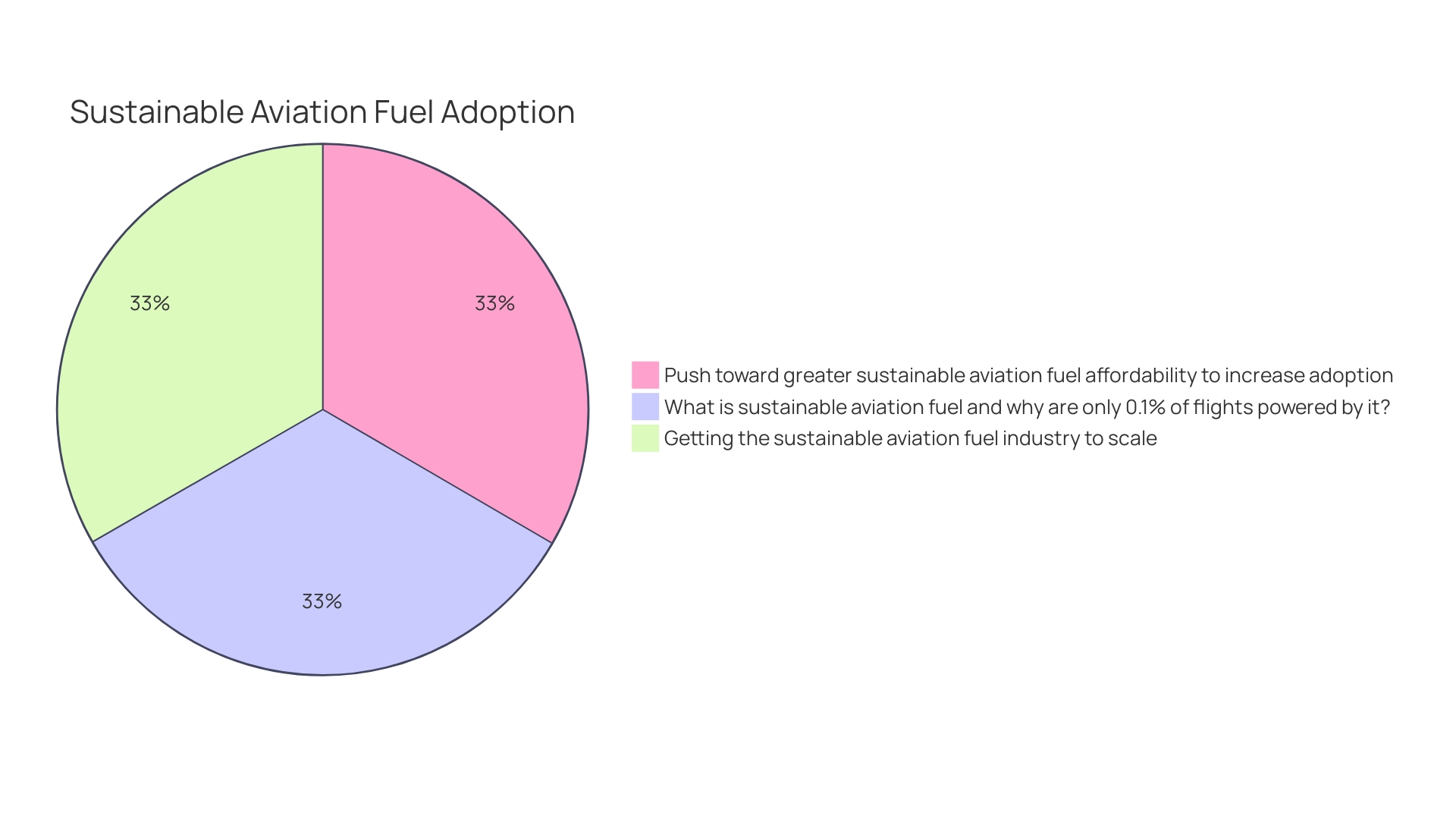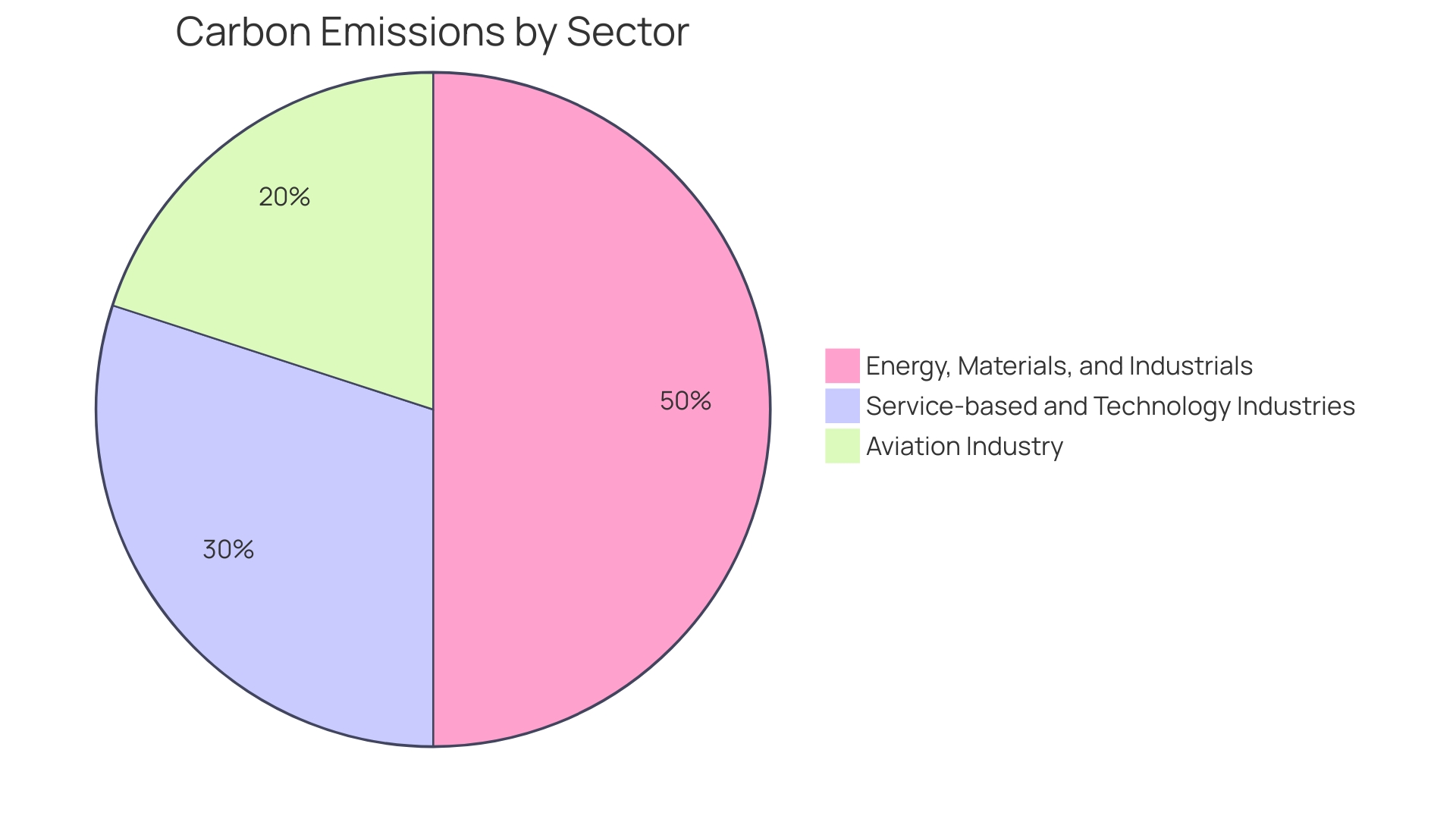Introduction
The aviation industry is undergoing a transformative shift towards sustainability, driven by a commitment to reduce carbon emissions and embrace renewable fuels. This article explores key innovations, operational practices, and policy efforts that are shaping the industry's journey towards a greener future. With a deep understanding of the renewable fuels industry, this article provides technical insights and analysis for an audience well-versed in the sector.
From the adoption of Sustainable Aviation Fuel (SAF) to optimizing flight routes and operational practices, and from innovative production pathways to policy and regulatory efforts, the aviation industry is taking significant strides to achieve net-zero emissions. Engaging in collaborations and partnerships, major airlines and industry players are leading the charge towards a more sustainable trajectory for future growth. While challenges remain, the path forward is being paved through innovation, collaboration, and a shared vision for a more sustainable aviation industry.
Industry Commitment to Sustainability
The aviation industry's dedication to sustainability is exemplified by the development and promotion of alternative and green jet fuel. With a clear focus on reducing carbon emissions, the sector is investing in initiatives to foster a green aviation movement. Major airlines, including British Airways with its BA Better World program, are at the forefront of this transformation.
They have taken significant strides, such as reporting carbon footprints and participating in emissions trading schemes, with the overarching aim of achieving net-zero emissions.
The role of Sustainable Aviation Fuel (SAF) is paramount in this journey. Its adoption could lead to a 60% reduction in emissions by 2040, making it a critical lever in the industry's decarbonization efforts. Companies like Neste are facilitating this transition with solutions like Neste Impact and partnerships with Airbus to expand the global SAF market.
These efforts are complemented by milestones such as Virgin Atlantic's acclaimed service excellence and expansion of routes, enhancing the customer experience while maintaining a commitment to sustainability. Airbus's initiative to ensure all their aircraft are 100% SAF-capable by 2030, in partnership with industry players like Emirates, further underscores the industry's collective pursuit of a sustainable future.
However, with aviation being a challenging sector to decarbonize, and with passenger demand growth outpacing emissions reduction measures, achieving net-zero emissions by 2050 requires continuous innovation and collaboration. The industry's readiness for climate change and the transition to a sustainable economy varies, as discussed at Marsh's inaugural aviation summit, highlighting the necessity for a unified approach to sustainability reporting and regulatory adaptation.
By combining a strategic vision with responsible business practices, the aviation industry is not only addressing its environmental impact but also shaping a more sustainable trajectory for future growth.
Key Innovations in Sustainable Aviation
Sustainable aviation fuels (SAF) are pivotal in transitioning toward greener air travel, with innovative production pathways like Hydroprocessed Esters and Fatty Acids (HEFA) and Fischer-Tropsch garnering significant attention. These advanced biofuels are integral in reducing aviation's carbon footprint, which is critical given the industry's estimated contribution of 3.5% to human-made changes in Earth's energy balance. The CO2 emissions from aviation, having doubled since the mid-1980s, now pose a risk of consuming a quarter of the CO2 budget to keep global warming under 1.5°C by 2050.
Innovations don't stop at fuel alone. The development of energy-efficient engines and cutting-edge aircraft designs that utilize lightweight materials is another frontier in curtailing aviation's environmental impact. Moreover, the integration of AI and machine learning technologies further enhances operational efficiency, thus contributing to the industry's overall sustainability efforts.
In the backdrop of these technological advancements, recent collaborations signal a transformative era for the sector. For instance, Virgin Atlantic's milestone flight towards net-zero carbon emissions and Germany's initiative to establish eSAF production capacities underscore a global commitment to decarbonization.
As the aviation industry strives for a more sustainable future, significant challenges remain. Nonetheless, through concerted efforts by key stakeholders, innovative breakthroughs, and strategic policy development, the path forward is being paved. The aviation sector's journey towards sustainability is not only a technological and logistical challenge but also a collective endeavor that necessitates global cooperation and shared vision.

Optimizing Flight Routes and Operational Practices
The quest for sustainable air travel is pivotal in combating climate change, and the aviation industry faces the complex task of reducing its carbon footprint without compromising efficiency. With commercial aviation responsible for approximately 3.5% of human-induced changes to the Earth's energy balance, the sector's CO2 emissions have worryingly doubled since the mid-1980s. A significant portion of this impact, beyond CO2, stems from nitrogen oxides and contrails that trap heat in the atmosphere, exacerbating warming.
The urgency for action was underscored at COP 27, yet the international response remains inadequate in the face of looming planetary boundaries and climate tipping points.
In response to these challenges, innovative strategies are being implemented to curtail emissions. One such approach is dynamic flight planning, utilizing advanced analytics to refine flight routes and operational practices, thereby optimizing fuel consumption. This method not only curtails emissions but also addresses non-CO2 factors by potentially reducing contrails.
Furthermore, sustainable aviation fuel (SAF) emerges as a promising solution, with the potential to reduce aviation emissions by 60% by 2040, provided its adoption becomes more widespread and affordable.
Amidst the industry's transformation towards net zero emissions, strategic collaboration is essential. As noted by industry leaders, achieving net zero will require a concerted effort from all stakeholders in the aviation ecosystem to support and finance the necessary technological advancements. Governments and policymakers are called upon to create frameworks that incentivize investments in renewable energy and low-carbon technologies, ensuring that emissions are reduced to the greatest extent possible and that any remaining emissions are effectively offset.

Policy and Regulatory Efforts for Greener Aviation
As the world confronts the reality of climate change, with extreme weather and discussions on planetary boundaries intensifying, the aviation industry is under increasing scrutiny to transition towards net-zero emissions. The European Union has taken significant steps in this direction, with the European Commission presenting a comprehensive package aimed at reducing greenhouse gas emissions by at least 55% by 2030, in line with the Paris Agreement's objectives. A notable outcome of this initiative is the provisional political agreement on the Regulation on ensuring a level playing field for sustainable air transport, known as RefuelEU Aviation, which showcases a commitment to decarbonize the aviation sector.
This commitment is further evidenced by the achievements of airports such as Finland's Ivalo, Kittila, Kuusamo, and Rovaniemi, which have significantly reduced carbon emissions through the exclusive use of renewable energy. Their efforts align with the Paris Agreement's goals and set a precedent for reducing emissions not only under their control but also those linked to third-party activities, including flights.
On the international stage, the third International Civil Aviation Organization (ICAO) Conference on Aviation and Alternative Fuels (CAAF/3) reached an agreement on a global framework for sustainable aviation fuels (SAF). This framework includes an ambitious goal to cut CO2 emissions by 5% by 2030 through increased use of SAF worldwide, with a review planned by 2028 to consider market and production capacity developments. The agreement enhances the environmental integrity of SAF and is a direct appeal to investors to prioritize cleaner aviation energy.
To further understand the environmental impact of aviation, statistics reveal that commercial aviation is responsible for approximately 3.5 percent of human-made changes to the Earth's energy balance. With CO2 emissions from aviation doubling since the mid-1980s, the industry faces the challenge of potentially accounting for a quarter of the CO2 budget to limit global warming to 1.5°C by 2050. However, the aviation sector is not only grappling with CO2 emissions but also with non-CO2 factors like nitrogen oxides and contrails, which contribute to the warming effect.
The path toward sustainable aviation is shaped by various factors, including the carbon intensity of aviation fuel, the energy efficiency of aircraft, and the volume of air traffic. Sustainable aviation fuels, zero-emission planes, and efficiency measures are critical in reducing fuel carbon intensity and aircraft energy intensity. Meanwhile, economic incentives such as carbon pricing can influence traffic patterns and growth.
In summary, while the urgency to act on climate change is echoed across the globe, the aviation industry's transition to net-zero emissions is gaining momentum, propelled by international agreements, government regulations, and industry commitments. These efforts are essential to ensure the industry's sustainable development while addressing the pressing need to mitigate environmental impacts.
Conclusion
The aviation industry is committed to sustainability, evident in its adoption of alternative and green jet fuel like Sustainable Aviation Fuel (SAF). Major airlines like British Airways and Virgin Atlantic are leading the charge with ambitious goals for achieving net-zero emissions. Key innovations, such as advanced biofuels and energy-efficient engines, are reducing aviation's environmental impact.
Optimizing flight routes and operational practices, along with the adoption of sustainable aviation fuel, hold promise in reducing emissions. Policy and regulatory efforts, like the European Union's comprehensive package and the International Civil Aviation Organization's agreement on sustainable aviation fuels, are driving the industry towards a greener future. The aviation industry's transition to sustainability is a collective endeavor, driven by a shared vision to mitigate environmental impacts while ensuring sustainable growth.




